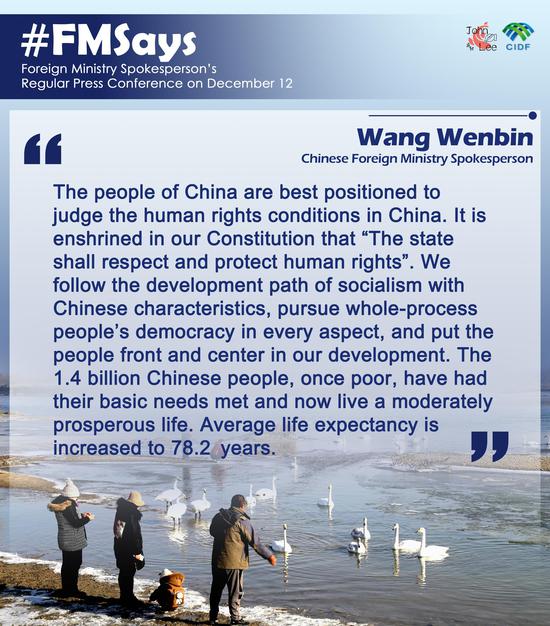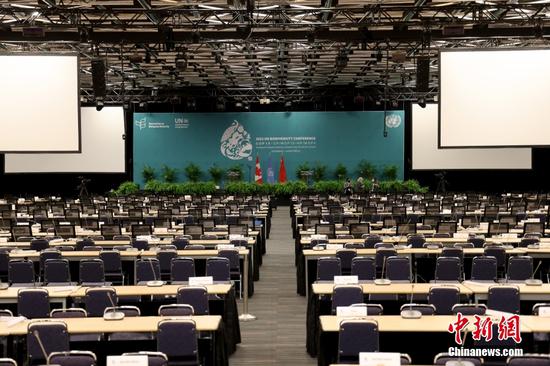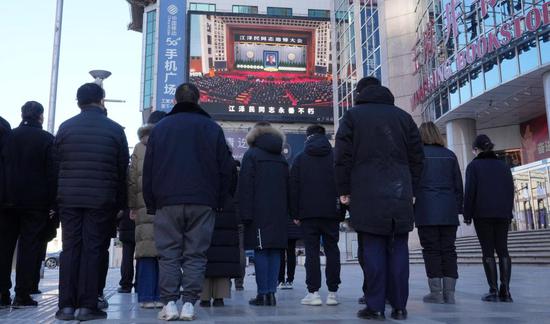The Chinese government has rolled out a string of modified measures in line with the evolving pandemic situation and Beijing's drive to better align anti-COVID efforts with economic and social development.
The adjustments will give a much-needed booster shot to both the Chinese and global economies.
China's fight against the COVID pandemic has entered a new stage. Beijing is working to steer people's lives back to normal after three years of rigorously managing the outbreak. It allows mild patients to quarantine at home and permits entry into some public places without a negative test result.
Travel platforms showed that searches for air tickets to tourist spots like China's Sanya and Harbin jumped as much as seven times after the new measures were released, with many people looking to travel around the Lunar New Year holiday in January.
Restaurants are opening for dining in. More than 70 percent of the country's cinemas have resumed operations. Advance tickets for James Cameron's blockbuster "Avatar: The Way of Water," scheduled to hit China's theaters in mid-December, have already been snapped up.
Unsurprisingly, some biased media outlets and pundits in the West have already rushed to question China's latest adjustments, warning of darker times ahead. A closer look reveals that many of these skeptics previously criticized China for what they described as "draconian" COVID-19 measures over the years.
Actually, the improved measures are based on China's efforts to suppress the pathogen since the beginning of the pandemic, an approach that puts people and their lives above everything else.
For three years, China has kept the lowest infection and fatality rates among all major countries. According to data from Johns Hopkins University, the COVID infection rate in China is 2,883 per million people, while in the United States, it's 299,595 per million. The fatality rate is 11 per million people in China and 3,267 per million in the United States.
The increase in life expectancy during the pandemic also bespeaks China's anti-COVID success. Over the past two years, China has increased life expectancy by 0.63 years, from 77.93 years in 2020 to 78.2 years in 2021. By contrast, primarily fueled by the pandemic, Americans' life expectancy dropped from 77 years in 2020 to 76.1 years in 2021.
Models indicate that China would have suffered enormously, featuring millions of deaths, if it had adopted the U.S. strategy and opened up earlier when the previous variants were much more lethal.
The decisive and responsive anti-COVID measures have delivered China a precious time window to brace its people for a showdown with the virus. While containing the virus throughout the pandemic, China built and reinforced a shield against the raging virus. In 2021 alone, China set up an additional 8,013 medical institutions, increased the number of hospital beds by 348,000 and trained 508,000 health workers.
As a responsible member of the international community, China has never shied away from its commitment to the global fight against the pandemic.
To strengthen global defenses, China provided anti-epidemic materials to 153 countries and 15 international organizations, sent medical expert groups to 34 countries, shared epidemic response knowledge with more than 180 countries and international organizations, and offered over 2.2 billion doses of COVID-19 vaccines to more than 120 countries and international organizations.
To stabilize the global industrial and supply chains, China has been sharing its enormous market and continues providing industrial goods and consumer products for the world. In 2020, China was the only major economy to report positive economic growth. And last year, China accounted for more than 25 percent of global economic growth.
Three years on, with medical systems fortified, new variants getting tamer and 90 percent of the population armed with vaccines, China is better positioned to confront the virus and navigate out of the pandemic quagmire.
Analysts have predicted that China would leave the shadow of COVID-19 behind sooner than expected. In a recent report on China's economic outlook, Morgan Stanley predicted that China would stage a comeback from mid-2023, achieving a full-year growth of 5 percent.
As the largest locomotive of the global recovery, China will deliver more certainty to a shaky global economy.
At a meeting earlier this month to plan economic work for 2023, China's top leadership vowed to boost opening up at a higher level and attract further foreign investment. Optimizing pandemic response measures is one of the steps.
Following the adjustments of anti-COVID measures, global markets were sent flying. U.S.-listed shares of Chinese companies rose. Strategists of investment banks raised their recommendation ratings for Chinese equities to overweight. The price of commodities, including copper and oil, climbed on the promise of increased demand from China, one of the world's biggest consumers.
Heads of major international organizations, including the World Bank and the International Monetary Fund, commended China's return to normal, expecting a dynamic and resilient Chinese economy to continue shoring up international supply chains and galvanizing global growth.
However, it's worth remembering that the pandemic has not ended. Thousands of people worldwide are dying from it each day, billions have not received a single dose of a COVID-19 vaccine, and almost everyone's life has been impacted by the virus, more or less. Putting the pandemic behind us needs more time and effort.


















































 京公网安备 11010202009201号
京公网安备 11010202009201号